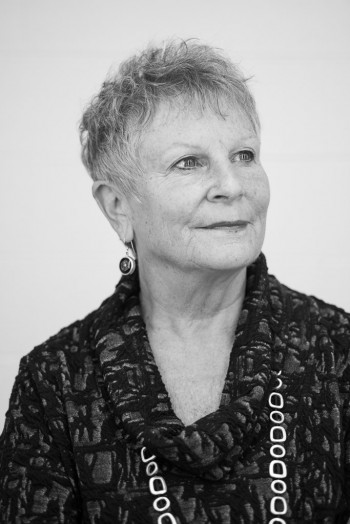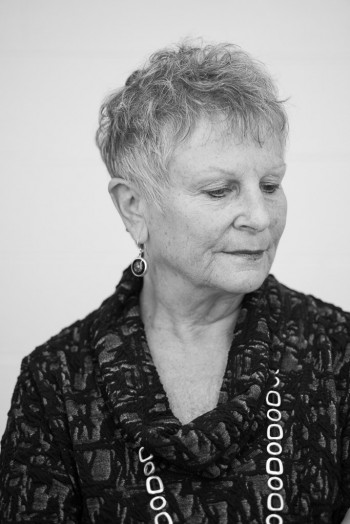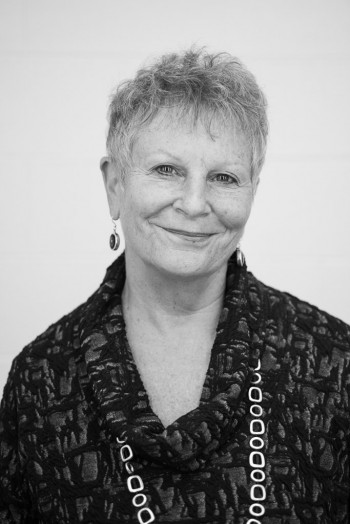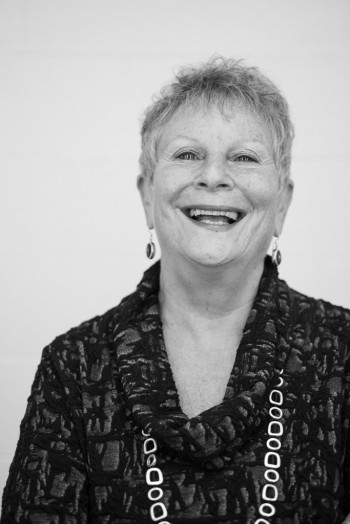Peter Jackson: Calming the mind and body
Peter Jackson has lived a life of sliding door moments, as he reveals in this fascinating interview. From unassuming beginnings as a (trial and error) farmer and a (tried and tested) truck driver, he became a midwife, pioneered the Calmbirth program, and now works as a private subconscious mind healer. His heartfelt, compassionate and thoughtful manner is his true motivating force. He genuinely cares. And he cares in ways that are backed by the latest knowledge in neuroscience.
I had to meet Peter when I learned he designed the Calmbirth program and lives close to me in the Southern Highlands. Calmbirth was instrumental in enabling a much more peaceful labour with my second child. It worked. So it was a pleasure to personally say thank you and to learn more about Peter, one of the most unassuming and effective trailblazers I’ve met in a long time.
Jess: Peter, can you tell me a little bit about yourself? Where were you born? What was your family like?
Peter: Well, I’m 73 years old. I was born in Sydney in 1943, the third of four children, and we lived with mum and dad in the suburbs of Lakemba. Unfortunately, my mother had leukaemia at age 31 and she died a month after the diagnosis, which threw things into chaos. At that point, in 1948, there was very little help available for single dads. My father’s brother and sister were occupied with all sorts of problems and couldn’t take us children on. So we all went to different boarding schools, which threw us into the wilderness metaphorically speaking. I was only five at the time. I remained in boarding school until age 11 or 12, and then my older brother and sister had come home, so I did the remainder of my schooling at day school. That was a difficult transition for me because in boarding school, life was so regimented, I guess in a sense I had become very institutionalised. I felt very confused at that time in my life. My schooling ended abruptly in about year nine.
When I was 14 the family decided to leave Sydney and purchase a farm with the intention of re-creating a more close-knit family to make up for all the separation in our earlier lives. We didn’t know anything about farming, but my older brother learned a bit about agriculture at boarding school. So, we thought, “This is not a bad idea”. I didn’t have a clue. We headed off and landed in Grafton on the north coast [of New South Wales]. We bought a farm about ten kilometres up river from Grafton, on Clarence River, and it was beautiful. I can remember spending a lot of time swimming in the river, the farm was a wonderful place to live.
We were on the farm for about seven years. Because we didn’t know a lot about farming, it was trial and error. As I said, my brother was the one who organised what we were doing. I was more the labourer, and dad was the foreman. We lived on very little money because there wasn’t a lot of money to be made on the land. And probably two years after we arrived my older sister left the farm to be married, so there was just the three of us. Anyway, we struggled there for a few years and we just weren’t getting anywhere. The property that we purchased had been overrun with cattle. The land was really in poor shape. It was depleted of all its nutrients. So, we struggled for a couple of few years, trying to make ends meet, milking a few cows and getting nowhere. So, we decided we apply for a Commonwealth Bank loan. It was only a very small loan, but sufficient money to buy a tractor, irrigation plant, and plough up about 20 acres of pasture to improve. This was one of the greatest life lessons for me. When the lucerne and the clover came up – in the area where we had pasture improved – it was yellow, it was spindly, and it looked terrible. So, we employed an agronomist to come out and have a look. He took some soil samples, and told us to put some potash and superphosphate, lime and trace elements on it. Now, those 20 acres were transformed in about six weeks. I often reflect on that time and the experience of the transformation of those pastures. Sometimes we all experience that depletion in our lives because of circumstances, and we need somebody to give us a hand, a few ideas to help the growth again. So, to me, it’s always been a very wonderful story.
At the time, we didn’t have a vehicle to get from Seelands to town, so we often used to go into town with the milk carrier and come home on the school bus. Whoever went into town had a suitcase of groceries to bring home. So, it was a Dad and Dave on the farm type thing. Time went on and I got to know the milk carrier fairly well, and he offered me a job. At around age 17, I started driving trucks and doing the milk run around the farms. We also transported spuds and corn, as well as the odd truckload of furniture. I started to take over the milk run when its owner was on holidays and then he gave me more work. During this time, I was playing football – I’d hitch a ride into Grafton on the Sunday morning, play football and come home and milk the cows on Sunday afternoons, so there wasn’t a lot of rest.
Jess: Not much time for leisure?
Peter: No, not at all. But towards my 21st birthday things began to change. The farm folded and I started to work full-time driving the milk truck and petrol trucks. I was living in town and met some other young people in the fellowship known as the young Christian workers. They would put on plays, which we don’t see a lot of today. It’s a pity because they were great fun. There was one play that I was involved in, New Moon, and that’s where I met Sue [Peter’s wife]. We had the lead roles and we started the romance on stage and continued it off-stage. I was restless and didn’t know what I wanted.
All my life has been trial and error.
Then I decided I would go to New Guinea in 1964 and do some voluntary work. I was involved in an organisation that sent lay people to assist the religious in what was known then as the missions. Because I had some experience on the land, they put me in charge of a coffee plantation. I didn’t know anything about coffee, but I learned <laughs>. So again, all my life has been trial and error.
I stayed there for 18 months and that was a really great experience, seeing how another culture lived and other fascinating things. It was just fantastic – all these native tribes and the headdresses and so on. It was very colourful. I remember one particular place where a lay missionary had done some wonderful work in increasing the yield of sweet potato – known as taro. I asked him one day how he did that, and he told me he just reorganised the way they planted it. Where others were getting a ton or ton and a half at the acre, he was getting seven and eight tons at the acre. So again, it was a learning experience and I employed some of the ideas where where I was. But I was still restless and, after 18 months, I thought, “Now, I’ll go back to Australia.” So, at that point, Sue and I were still together and it wasn’t long after that we decided to get married.
Jess: What did you do then?
Peter: I went back to driving trucks. So I worked in a service station as a grease monkey – oil changing, greasing cars. I didn’t have any qualifications as a mechanic, and in those days it used to be driveway service, so I’d be running back and forth. I remember sitting there one day and just trying to figure out, “What do I want to do?” and I thought, “Well, I like to gain knowledge because I’m a curious person”. I felt I couldn’t because I left school in second year, but I knew that I wanted to work with people. So I thought, “Okay, I’ll apply at the hospital as a wards man because then I’d be working with people.” And, during the New Guinea experience, I did have the opportunity to do some rough first aid. There were always cuts and things like that and I enjoyed bandaging somebody up and dabbing a bit of iodine here and there, and taking them to the hospital. I applied at Grafton Hospital and the person who interviewed me said, “Do you want to be a nurse or a wards man?” That question was a sliding door moment for me! Do you remember that movie?
Jess: Yes!
Peter: Now, at the time, it wasn’t part of my belief system that men could train to become registered nurses, but I wanted to give it a go. So the person who interviewed me sent me along to see the matron. During that interview, the matron agreed to employ me. But she said, “For you to become a nurse first, you will have to go back to school and do [what was called in those days] the nurse’s entrance exam to lift your education qualifications.” I said, “Okay.” So, I went back to school.
Jess: Was that at a high school?
Peter: No, I knew some of the Marist brothers that were teachers at the Catholic school in Grafton and I just rocked up there and asked them, “Can some of you guys give me a hand with some English and maths?” And it only took me six months because my brain was in much more of a learning state during that time compared with when I was at school. So, I got through the nurses’ entrance with no dramas and started nursing and, of course, I never looked back. The potential was always there and I don’t say this to skite, but I got the gold medal at the hospital. I got a high distinction in the final exams. The potential was all there, but it had been shifted sideways because of those early circumstances.
Jess: I imagine it was highly unusual for a man to consider nursing as a career option?
Peter: Absolutely. It was a very unusual thing in the 1970s, and the terminology used then for nursing staff was very much based on the hierarchical structure of religious orders, that is, registered nurses had similar titles to those in the religious order. Everybody was called sister; when you passed your final exams to become a registered nurse, you were given a veil to wear and you were called “sister”! And so I coined the phrase, “Mr Sister”. When people phoned the hospital and asked to speak to the sister I would say, “Mr Sister, speaking.”
I worked for 12 months as a registered nurse at my training hospital, and I had really good working relationship with the matron there. She called me into the office one day and said, “Peter, I think you’d be good in the administration of a hospital.” Now, to do that, you need to know everything that goes on in a general hospital. So, you have to go and do your midwifery certificate. So that’s how I came to be a midwife. I never planned any of it.
In January 1976, Sue and I moved from Grafton to Emu Plains and I started work at Blacktown. And again, it was very rare in those days for men to become a midwife, I can assure you, I did receive some strange looks from time to time. It was an amazing year, although I came away from my midwifery training believing that birth was a medical and surgical problem for most women. The midwifery training was very grounded in the medical model and there’s nothing wrong with that, but it lacked the balance of the midwifery model, where midwives genuinely believe in women’s abilities to birth their babies.
Unfortunately, in medicine as in many of our institutions, there’s always a bit of a turf war going on between the midwifery and medical models of care. I worked at Blacktown Hospital, 12 months, and I did really well again in the final exams. But I think I learned more from mothers than I learned from the textbooks, just by talking to them. And I always had that ability to sit and say, “Well, tell me a little bit about your birth experience,” and to learn from their stories.
Jess: Did you find that you were enjoying it all? Were you feeling passionate about the work?
Peter: Yes. It was fascinating and I had a general plan for what I wanted to do after my midwifery training. I said, “I’ll go and do six months of paediatrics and then I’ll go and do my psychiatric nursing certificate.” So I applied at Prince of Wales Hospital in Sydney for paediatrics. The door closed there, so I went from Blacktown Hospital to Morisset Hospital and completed my psychiatric nurse training in 1977/78. Well, that training and experience was really a mind and eye opener. There were about 1500 patients at Morisset then. Probably 350 were intellectually handicapped children, and some of those children/young adults were profoundly handicapped. There were other children/young adults that could look after themselves with a lot of guidance, but it’s really sad, when I look back, how they were placed into those institutions. There were also many psycho-geriatric patients there, several wards full of people with acute mental and or emotional problems, as well as a ward for the “criminally insane”. I spent about three months with the criminally insane, which was a fascinating part of the journey. I also worked for many months in the ward where we cared for people with drug and alcohol problems.
The patients often helped me during my time at Morisset, sometimes more than the staff members. I would often just sit down and listen to their stories and talk to them. The criminally insane ward was particularly heavily staffed, as you can imagine. The patients could be volatile in their behaviour. When I look back, I was more like a corrective service officer rather than a nurse. The patients were locked into their little rooms by about five o’clock in the afternoon. We used to do 12-hour shifts from six to six. But each day there was a one-hour opportunity for staff members to sit down and have a bit of a chat with the patients. I remember talking to about five or six of the patients one day. I asked all of them questions about their life journeys. I’d read all their clinical notes by this stage, and from reading their clinical notes and speaking to them I came to the conclusion and really believe that the often traumatic environment they had grown up in played a huge part in their illness and mental conditions. Yes, I can understand and accept that genetics play a part, however the evidence of today’s neuroscience suggests very strongly, particularly through the science of epigenetics, that environment also plays a huge part in shaping our health and mental stability.
Anyway, I remember asking my work colleagues in the criminally insane ward one day, “What do you reckon is the main problem was with these patients? What causes these people to lose the plot [metaphorically speaking]?” They all looked at me as if I had two heads and they just said, “They’re bloody mad. That’s all.” They had no empathy or gave any indication that they tried to understand where these poor people were coming from. I asked myself, “How could you really help somebody if you had that attitude?”
After completing my psychiatric nursing certificate, I went back to Grafton Hospital. By then I had obtained three nursing certificates, and the powers that be at Grafton Hospital moved me around to different areas of nursing and where the need was. I spent time as clinical co-ordinator in the wards and time in the School of Nursing. I was teaching mainly the third year students in maternal and infant welfare.
I was also seconded to a community mental health centre in Grafton for 12 months to take care of the community psychiatric position while the person who had been working in that position took 12 months leave. I stayed in that position for about 20 months.
Now, there were no real facilities other than the GPs to look after people with emotional and mental illness in Grafton at the time. We had a psychiatric clinic over at Lismore, attached to Lismore Base Hospital. When I started at the community health centre, everybody who walked through the door with some emotional problem was directed to me. In looking for more resources to help the people I was caring for, I became very interested in self-help groups. I encountered a lot of families where there were alcohol problems that were very disruptive to family life. So, I started getting interested in AA (Alcoholics Anonymous) and another self-help group called “Grow”. It was developed by a person who had experienced a nervous breakdown. He took the principles of AA, that is the 12 Steps, and applied them to helping people suffering from emotional and mental illness. He initially called it “Recovery” and later changed the name to “Grow”. Truly, the Grow program is a brilliant self-help program. So, I started some Grow groups, and I saw some wonderful things happening. Acknowledgement by the individual that they have a problem is the first step, no matter how big or what the problem is. The next step is to find a solution. “What are we going to do about it?” The self-help groups were a wonderful way of enabling people to overcome their limitations and begin to move in new directions by using and strengthening their inner resources.
Jess: And I imagine that that was at the beginning stages of the self-help movement?
Peter: Yes.
I often say that I’ve nursed people from a few minutes old right through to 102, and everywhere in between. I’m still full of questions.
Jess: Again, that was new territory. It wasn’t really mainstream at the time…
Peter: New territory, that’s right. So then an opportunity came up for me to work with the Grow organisation for a little while. Sue and I said, “Well, let’s do it.” We packed up and moved to Sydney. I worked there for a few years and decided I wanted to get back to nursing. I applied at Westmead. And again, another sliding door moment because the person who interviewed me said, “You’d be a good father figure in the adolescent unit.” So I gave it a go and it was a wonderful three years. I spent a lot of time on night duty. The patients in the adolescent ward were anywhere between the ages of 13 to 21, young people with a variety of health problems – appendicitis, motorbike or motor vehicle accidents, oncology, mental health problems, attempted suicide, anorexia. It was a diverse and busy unit. We had 29 beds and they were full all the time. And on the night duty shift there were only two nurses rostered, it was all go, go, and go. Of course there were some quiet shifts and I can recall spending time listening to some of the young people who had terminal illnesses, like cystic fibrosis or cancer. It was another great learning experience. I learned to simply listen to people, and I was totally amazed at the courage of these young people.
I often say that I’ve nursed people from a few minutes old right through to 102, and everywhere in between. I’m still full of questions. I have a picture at work of a little boy sitting in a chair with a book on his lap, and the caption says: “There’s no answers in life, there are only more questions.” And I think that’s pretty true.
After a few years, Sue and I looked at each other one day and said, “Look, we need to get out of Sydney.” At this stage our two daughters had come into the world. Both our daughters were adopted, and having these two lovely girls was a wonderful part of the journey. But we thought it’s too hot to go back to Grafton, and we always liked Bowral. So we moved here and within about ten weeks I had secured a job at Bowral Hospital. They said, “Where do you want to work?” I said, “Well, wherever you think I might fit.” The people interviewing me noted my midwifery qualifications. I was sent to the maternity unit and I stayed there for the next 17 years.
I asked the question, “In our care for women during pregnancy and childbirth, are we missing something? And, if so, what might that be?”
I began to ask more questions. I thought, “Why do some mothers have such a terrible time during childbirth and other mothers seem to birth their babies with less trauma?” Although I had been away from midwifery for some time I noticed that within the medical model there was still a lot of interference or managing of many mothers’ births. I completed an updated midwifery course at the College of Midwives to get myself back up to speed. And I kept going to pain management seminars because most mothers were saying to me, “Peter, its painful, it’s awful.” It didn’t make sense to me. I can understand that childbirth is going to be hard work. But it shouldn’t be something where mothers say, “I’m glad that’s over,” or “I’ll be glad when it’s over.” This can’t be what nature intended. I asked the question, “In our care for women during pregnancy and childbirth, are we missing something? And, if so, what might that be?”
Jess: Childbirth is not really painful in the animal kingdom, as far as I know.
Peter: That’s right, especially within other mammalian species of which we human beings belong to.
Jess: They don’t scream through labour.
Peter: That’s right. I happened to attend a pain management seminar in Canberra in 1994 where they devoted half a day to speakers who were complementary therapy practitioners. The presenters included an acupuncturist, a chiropractor, a masseur, an aromatherapist and a hypnotherapist. Pennies began to drop for me during the hypnotherapist’s talk. Then my search into the world of subconscious mind therapy began. I applied to do a clinical hypnotherapy course and PSH training with two Australian clinical hypnotherapists and PSH therapists Greg Brice and Frank Wright.
Jess: PSH?
Peter: “PSH” is for Private Subconscious Mind Healing. It is an approach to subconscious mind therapy, which is based on the work of some really wonderful scientists like Dr Milton Erickson, Dr Edgar Barnett, and many other pioneers in the field. Both Erickson and Barnett realise the importance of privacy when working with people with emotional and or mental challenges. Brice and Wright picked up on this aspect and developed the privacy concept further. “Keep out of the person’s mind, there is no reason for you to be in there. Keep out. Why? You’re only going to apply your interpretation of the problem based on your life’s experience and learning and of course you could be entirely wrong.” The person I am working with does the inner work in the PSH model of therapy. What I do is provide the atmosphere, a safe environment, and some guidance for them to do what I call some creative reorganisation at the subconscious level. So, I did a clinical hypnotherapy course with the Brice Wright school of clinical hypnotherapy and the centre for PSH training. It took another 18 months of training to obtain my PSH therapist qualification.
I entered the world of subconscious mind therapy to find ways to help mothers have a better birth experience, and I wanted to work with those mums who encounter that horrible morning sickness that goes on all day. In medical terminology, severe vomiting during pregnancy is called Hyperemesis Gravidarum. We love jargon in medicine. These are the mums who usually end up in hospital with IV therapy for rehydration. So I did my research paper on Hyperemesis as part of my PSH training. I started to work with this new knowledge and skills and very soon I began to witness some amazing changes for the better in people. During my nursing training I was very grounded in analytical thinking and I had to learn to let go, to get out of the way. When people came to seek out PSH therapy, it was not about me, it was about them. Primarily a PSH therapist is a teacher of a skill; a teacher is only a guide at best. The question I generally ask when a person first arrive for help is, “What can I do to help you create something different?”
The mind body connection is now being verified in the work of neuroscientist Dr Joe Dispenza and cellular biologist Dr Bruce Lipton, as well as many other scientists. Yes, with all of the breakthroughs in contemporary sciences we’re really getting a much deeper understanding of the mind body connection. The mind controls our physiology; the body is subjected to mental processes.
As I gained more experience in subconscious mind work I cut down my work at the hospital from full time to 0.8, and then 0.6. In 1997, Sue went over to the US to do a course for 12 months and I followed her for about two and a half months on long service leave. That’s when I came across Marie Mongan’s HypnoBirthing program.
At the time I was still building more understanding of subconscious mind work; I was working with individual people with emotional problems. I was also working individually with mothers, preparing them for childbirth. At that time, I thought Marie’s childbirth program was a good idea. I researched her program to find a little bit more about it and began using the HypnoBirthing program. As time passed there were aspects of the program that were not sitting right with me. I realised that it didn’t have the underpinning of the science that I was familiar with in my nursing training. Marie’s program was a good one, but it just lacked for me a good foundation. So I started with that program, but then I talked to Marie about making some changes and she said no. And I understood that from her point of view. HypnoBirthing was her baby, metaphorically speaking. So, I said, “Okay, Marie let’s just agree to disagree and I’ll go my own way.”
And that’s when I wrote the Calmbirth childbirth education program, which is based on some of the ideas that I had learnt from HypnoBirthing. But it has much more contemporary neuroscience underpinning it, and the subconscious mind therapy aspect is taken from my PSH training. Cardiologist Dr Herbert Benson’s work and explanation of the normal physiological system in the body, which he called the relaxation response, also played a prominent part in the underpinning of the Calmbirth program. As time went on, I incorporated more work by doctors such as Joe Dispenza and Bruce Lipton, so the Calmbirth prenatal education program is built on a solid scientific foundation. As far as I’m concerned, all of the Calmbirth program can be explained by what we know about physiology today. The program is designed to teach mothers to use their inner resources to work with the birth and to help them understand the process of birth so they can help the baby into the world instead of resisting the labour journey. Mothers who resist the process of giving birth because they’re frightened will tense up and engage the sympathetic, flight and fight or survival response of their physiology, instead of the parasympathetic response. This enables them to create their unique birth experience no matter how things unfold.
Jess: And was Calmbirth applied in the hospital setting or did women need to come to you?
Peter: The answer to the first part of the question is no. Calmbirth has always been a privately run prenatal education program. But I was very fortunate that at Bowral Hospital I got on well with the majority of the staff and the obstetricians. I didn’t go in there with my guns blazing saying, “Hey, I’ve got this wonderful program.” Rather, I said, “Look, this might be helpful.” It was slowly, slowly, and then the doctors and midwives began to refer some people to me, and they could see the results. We’re now getting more and more people coming. One of the highlights of 2010 was when the Royal Women’s Hospital in Sydney contacted me one day and said, “Look, Peter, we see something very different in the mothers who have done your classes.” So they invited me to do a pilot study over 18 months, running or presenting monthly classes.
Jess: And the objective research came out with pretty solid data?
Peter: Yes, pretty solid data, and they want to do some more research now. RWH has recently increased the number of Calmbirth classes to 20 per year. Every weekend we have about 12 couples come to our Calmbirth centre at Mittagong for classes and when each couple introduce themselves at the beginning of the class, the vast majority say we came here because other couples or their OBGYN told us to come. Word of mouth is what brings most couples to our classes, and now we’re hearing a number of obstetricians saying to the mothers in their care, “If you want to do a class, go to Calmbirth,” because OBGYNs say it’s much easier to deal with a calm mother if a problem arises than somebody who’s out of control.
Calmbirth is not about how to birth; it’s about helping couples create the experience, no matter how that birth unfolds. The other research that I often speak about in my classes is that probably 85% of healthy young women can do this, but 85% of healthy women don’t know that because they’ve been inundated with so much negativity about childbirth for generations. So, it’s really about changing beliefs about birth out there in the community. I always emphasise to couples that birthing a baby is a hard day’s work, you will feel sensations you have never experienced before. Birthing a baby doesn’t have to be excruciatingly painful. We know now that if we get the cocktail of birthing hormones right, then the birth of a baby can be an amazing and positive experience for the couple and their baby. I often say to couples, your body is a chemist shop, and we in the medical model have to help you create the atmosphere, an atmosphere that is calm and intimate.
The mammalian principles of birth are simple. A mother will birth best where she feels safe and where her privacy is respected. When I did my midwifery training back in 1976/77, those mammalian principles of birth were not clearly understood. In a teaching hospital you often had 20 students watching a mother give birth! The mother’s privacy was not paramount, rather the education of the student midwives was. Also we separated the couples. Dads were never present at the birth and in hindsight I’m sure mothers did not feel safe under those circumstance. So the fight and flight system was activated in many mothers during childbirth instead of the parasympathetic system.
Jess: So you’re not doing midwifery any more?
Peter: No. At the moment I’m focused on Calmbirth classes and the individual work I do with PSH therapy. I see this approach to emotional healing as a great tool. I love Dr Joe Dispenza’s little saying, “You can’t go to the future while you’re hanging on to something from the past.” Yes, it’s hard to let go when something becomes an entrenched habit or a habitual way of dealing with emotional issues that were learnt during some earlier emotional trauma that happened in the past. People get stuck and so I help them to become very still and quiet. I help them go within, into the privacy of their mind, where with a little guidance the person can do what I call some creative reorganisation. Undoing the knots of the heart so they can be more at peace in the present. PSH allows people to move in a new direction, and over the years I have seen some pretty amazing things happen. Changes to the person’s whole perception of life.
Jess: What kinds of issues do people usually have?
Peter: Well, there’s a broad range, but probably the majority are very anxious, depressed, experiencing panic attacks. People who have grown up in very dysfunctional families and they’re really struggling because their foundations were laid in an unstable way. I get people wanting to give up smoking, which is amazing when they realise that they can do it.
I’ve worked with a number of children in pretty amazing ways. One little girl I worked with came down from Sydney, her mother brought her down because she was so frightened of going to school, refused to go to school, and her anxiety level was so high. She was only nine years old. Of course, everybody was trying to analyse what’s wrong. When people become anxious and filled with anxiety, there’s usually been some emotional disturbance or there’s some hurt which has changed their perception, and they become fearful, and it is the feelings that generate behaviour. We store beliefs and perceptions in the subconscious part of the mind, which releases the chemistry that allows us to feel the way we are thinking, so the next time a person is faced with what they perceive as the same fearful situation, the same chemistry is released from the brain just by thinking about it … the fearful feelings are experienced again and again and after a while the behaviour is reinforced. I worked with this little girl for two sessions. She wasn’t the best at sitting still. However, she did have a brief period where she closed her eyes. I also showed her some really simple things from the science of how we learn things and told her some stories with specific messages contained within them.
Her mother sent me a beautiful letter a month after the sessions. She said, “Abbey’s back at school and she’s written up on her wall the three things that she took from her conversations with you.” One was, “I’ve got to break bad habits.” Second, “I’m in charge of change in me.” How about that for a nine-year-old? Third, there was a little saying I gave her, “You cannot direct the wind, but you can adjust the sails.” I got a follow up letter 12 months later; the mother said this child is just blooming. Many, many people have given me wonderful feedback about positive changes in their lives following PSH therapy. It helped them begin to grow again and that’s what it’s all about, any therapy is simply a metaphor for change. Dr Bruce Lipton has that wonderful equation that I’m particularly fond of. He says, “Survival equals growth divided by protection.” It’s just a very simple equation. The more protection we’re in – when we are stuck in fearful negative emotions and are constantly in a state of stress – then the less energy we have to grow. If you have somebody who’s very anxious and frightened all the time, then that’s using up all their energy, and they’re frightened to do something new. People in that state of mind can’t grow anymore.
Jess: Now I know you’re still in the process of learning, so where to from here?
Peter: Where to from here? Well, I’m in a transitory period, I think. Our daughter, Karen, who is also a midwife, is taking over the administration of Calmbirth. I present weekend Calmbirth classes, usually two weekends per month. I don’t have any great desire to retire and sit on the porch and do nothing, that will drive me insane.
Jess: No. You’ve got a lot of energy.
Peter: Yes! What I’d like to do is continue to push the frontier in neuroscience and perhaps continue to evolve Calmbirth in terms of the subconscious mind work.
Jess: I’m interested in how people bring meaning to their lives in various ways, and usually that’s via some kind of spiritual pathway. A lot of what you describe is very much anchored in science and the rational, but you’ve simultaneously been very drawn to the more mysterious realms. You’ve been responsive to your own sense of empathy and care for the people that you’ve worked with. So, would you describe yourself as being spiritual at all?
Peter: Definitely. And it hasn’t been an easy journey. However, spirituality involves a search, one particular mystic succinctly expressed it this way: “Faith and love are like the blind man’s guides. Faith can be compared to our feet that move us in the direction and love is our guide.” Faith doesn’t give you the physical evidence. It’s something that you believe in.
If I go back right to the beginning of my spiritual journey, it was full of fear. There was a lot of fear instilled at boarding school. It was a Catholic boarding school and I’m certainly not blaming anybody at the time because that’s what the religious were taught to teach us. They were also fearful. One could compare it to the present day medical model, which is risk orientated. I came out of that experience very confused and feeble, but something inside me knew there was something different, so I kept searching. Over the years I also attended quite a number of spiritual events and read quite a number of books on the subject. Both Sue and I were drawn to the Carmelite tradition in the Catholic Church. Carmelite spirituality has much to do with what is called mystical theology. There have been some amazing people who have given us some amazing insights because of their contemplative lifestyle.
I have a great love of certain passages of scripture. My favourite is Corinthians 13: “If I have all the eloquence of men or of angels, but speak without love, I’m simply a gong booming or a symbol clashing. If I have the gift of prophecy, understanding all the mysteries there are and knowing everything, and if I have faith in all its fullness to move mountain, but without love then I am nothing at all… Love is patient and kind, it is never jealous, love delights in the truth and endure whatever come…” Of course there is more to the passage than what I have said.
Another passage, which helps me with my science, is from Psalm 139. To do with life in the womb. It has two beautiful verses in there. You know when I said to you that some people live a short time and some people live a long time? The psalm in a very poetic way describes the following: “It was you who created my innermost self and put me together in my mother’s womb. For all these mysteries, I thank you for the wonder of your works. You watched me as I was knitted together in the limbo of the womb, my days listed and determined, even before the first of them occurred.”
How beautiful is that? Call me a bit naïve but that is the only way I can make sense of why some people’s lives are short or have an early sunset, while others live longer and have a longer time before their sunset. The theme of sunset is expressed in another particular poem that I like in these words: “There is an energy in us which makes things happen when the paths of other persons touch ours and we have to be there and let it happen. When the time of our particular sunset comes our thing, our accomplishment, won’t really matter a great deal. But the clarity and care with which we have loved others will speak with vitality of the great gift of life we have been for each other.” To me, that sums it up very beautifully and succinctly.
Jess: It all boils down to love. It’s interesting that science and spirituality are slowly but surely making their ways towards each other, and the realisation that a lot of ancient wisdom which has been handed down through spiritual teachings and belief systems are finally starting to be proven true.
Peter: Yes, it is merging. One of the things that Joe Dispenza says that if you’re going to talk to a group of people, speaking from known science can often disarm the different factions you might have in your audience. If you start to talk about religion or spiritual experiences, then you may have different denominations in the audience you are speaking to. Then, immediately, you probably will create division. So I can see what Joe’s doing, and Joe is doing some wonderful work. There’s no doubt about it.
But I think I differ a little bit in that, if you are loving to people, if you connect with them, then that probably will begin to get them to ask questions. So then you might have the opportunity to explain it and answer their questions about spirituality, to explain it gently, not shove it down their throats <laughs>.
The most important thing is to connect with people.
Jess: Like building rapport.
Peter: It is. The most important thing is to connect with people. And if you do that, you’re got a chance then of helping them perhaps see things in a different way, but if you don’t build that connection, you’ve got no chance. And that goes for any institution or any self-help or healing profession. Unless you connect with the person you’re working with, you probably won’t achieve anything.
Jess: It seems to be that most people’s health problems have something to do with stress. So, it is stress – and stress is fear and stress is anxiety – I mean they have a very, very strong relationship to each other. It seems like the solution are things like stillness, quiet, love, connecting, all of these things, which is about feeling safe, I suppose. Feeling safe in life, rather than feeling stressed or put upon. It seems that all of the teachings, all of the traditions, and all of the science, all of it centres on the premise that if you’re stressed, fearful or anxious, the antidote is calm and feeling safe, feeling nurtured.
Peter: Well, physiologically, the survival response or what we commonly call the fight or flight response is revved up too high in our culture because we are driven. We’ve got to get this done. We’ve got deadlines. And our families and communities are more fractured. If we look at the last century, those two horrible world wars, those events just distorted the whole picture. So we are living more in survival mode. Physiologically, we’re all on hyper alert. Now, according to the science today, Joe Dispenza will say that what happens is we begin to wear out the genetic material, the same gene expressions keep firing because of our entrenched habits and beliefs. The genes then begin to produce second-rate proteins, and this is what makes us susceptible or vulnerable to many of the diseases that we are seeing today. So again, it seems to come back to that word stress.
On the other hand, as you were just pointing out, if we can enter into that quiet, that calmness and serenity, then the body has a chance to renew. And we start to send different signals to the body. The science of epigenetics suggests and demonstrates that we signal the expression of genes from the environment. If our perception of the environment changes, and we are less fearful or stressed, then the genes can express themselves in new ways. Our genes do not change, rather the expression of our genes can change depending on how an individual perceives the environment. If we’re firing the same negative thoughts every day, and we have high levels of stress, then we are wearing out that particular expression of the genes, so the proteins that are being made becomes second class. And that’s when we become more vulnerable to illness and disease. It all makes perfectly good sense.
Jess: Yes, it does. I’m envisaging a future where the science will be so much better established and mainstream that we will one day live in a more relaxed state <laughs>.
Peter: We got a lot of work to do <laughs>.
Jess: We do! Thank you, Peter.
* For more information about Calmbirth, visit www.calmbirth.com.au
* Photographs courtesy of Hamish Ta-mé. For more information about Hamish, please visit www.shotbyhamish.com
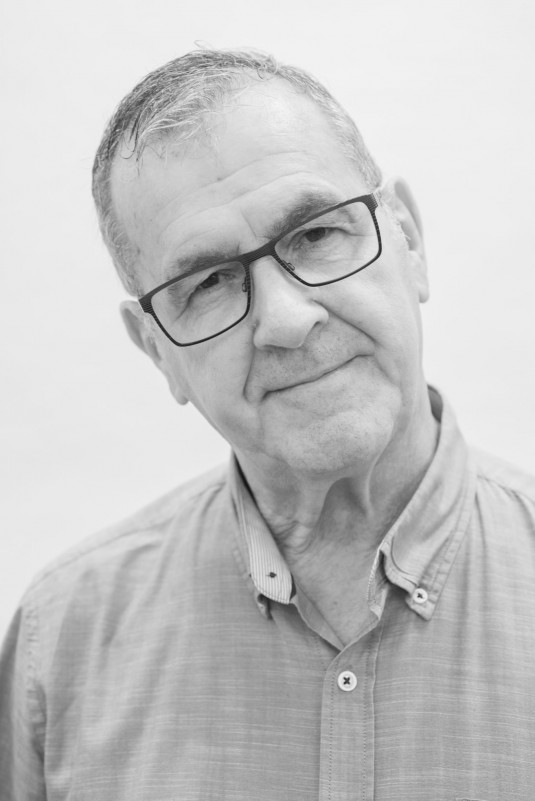
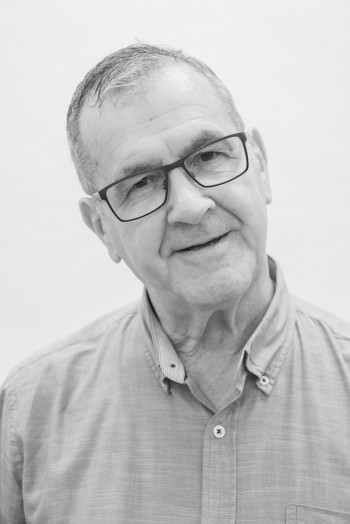
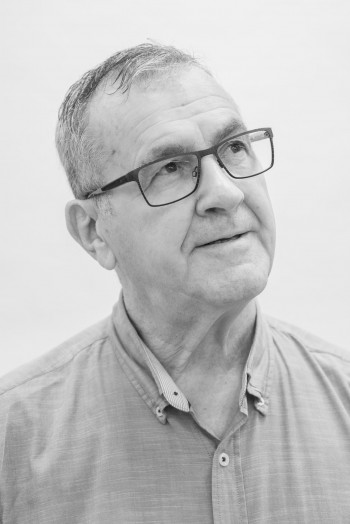
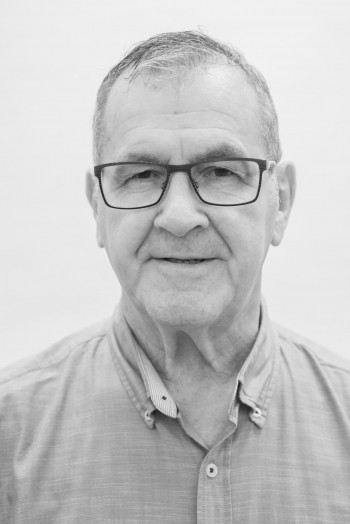
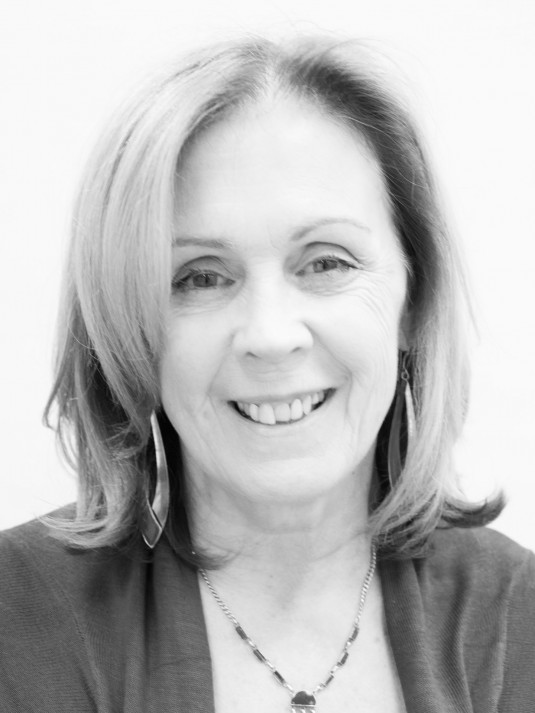
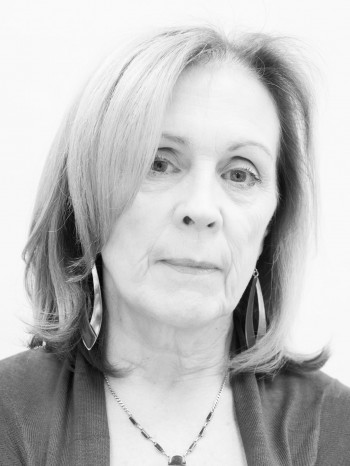
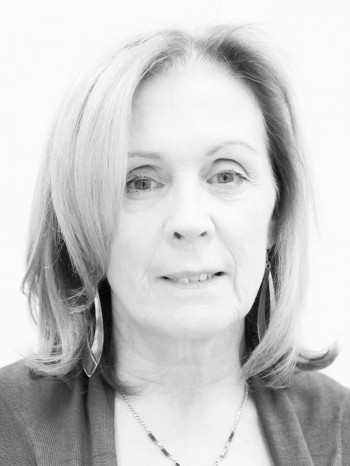
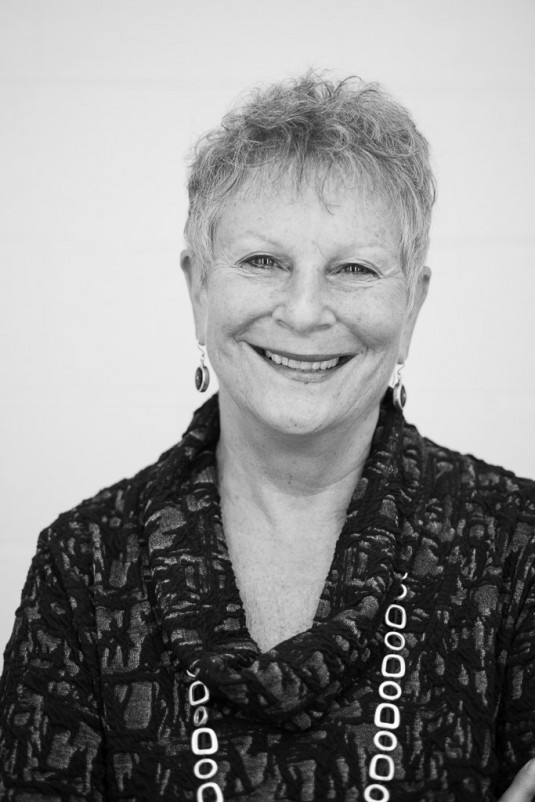 Petrea King
Petrea King